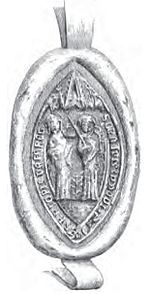Free Presbyterian Church, Perth
1939 establishments in ScotlandCategory C listed buildings in Perth and KinrossChurches in Perth, ScotlandListed buildings in Perth, ScotlandListed churches in Scotland ... and 1 more
Scottish church stubs
Perth Free Presbyterian Church is located in Perth, Perth and Kinross, Scotland. Standing on Pomarium Street, in the southwestern corner of the city centre, it was completed in 1939. It is now a Category C listed building. The church was designed by local architect William Erskine Thomson.A "distinctive, little-altered, well-detailed church," it is notable for its crowstepped gables and steep pedimented dormerheads.The church and adjoining flat were originally built as a hall and caretaker's flat for the Forteviot Charitable Trust in what was then a run-down area of Perth.
Excerpt from the Wikipedia article Free Presbyterian Church, Perth (License: CC BY-SA 3.0, Authors).Free Presbyterian Church, Perth
Pomarium Street, Perth Upper Craigie
Geographical coordinates (GPS) Address Nearby Places Show on map
Geographical coordinates (GPS)
| Latitude | Longitude |
|---|---|
| N 56.394 ° | E -3.4363 ° |
Address
Pomarium Street
Pomarium Street
PH2 8JF Perth, Upper Craigie
Scotland, United Kingdom
Open on Google Maps









